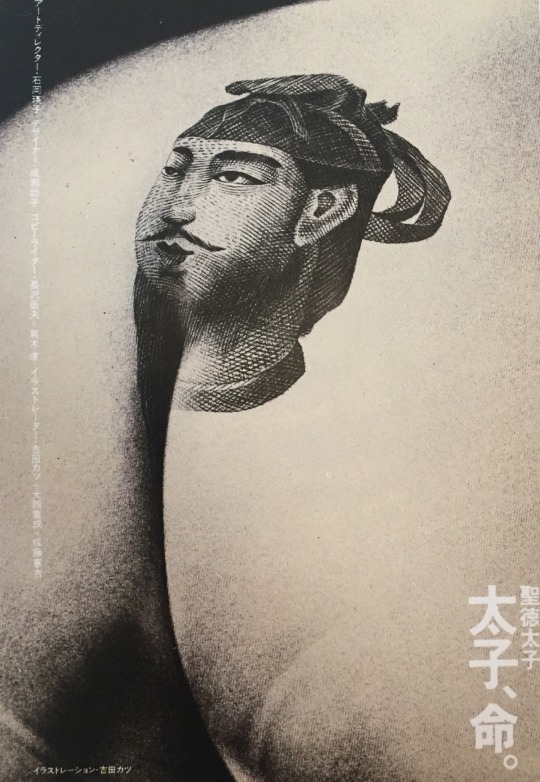#katsu yoshida
Text
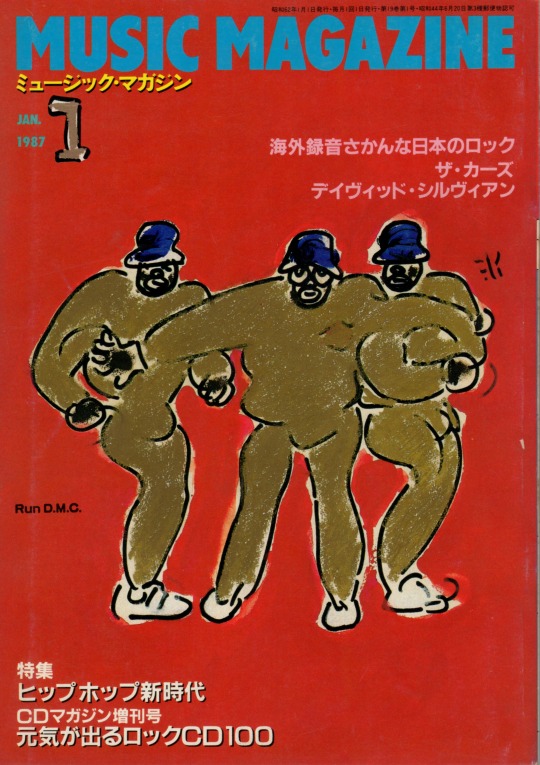
ミュージック・マガジン 1987年1月号
表紙=「ラン=DMC」吉田カツ
特集 ヒップホップ新時代
#music magazine#ミュージック・マガジン 1987年1月号#ミュージック・マガジン#Run-D.M.C.#ラン=DMC#katsu yoshida#吉田カツ#anamon#古本屋あなもん#あなもん#book cover
96 notes
·
View notes
Text


"ANIMEGU 30th" Anison Cover Mini Album
■ Jacket illustration: animator Tadashi Hiramatsu (Evangelion, Jujutsu Kaisen etc.)
■ Release: February 5th, 2023 by Lantis
■ Price: 3,080 yen
30 years of Yu Yu Hakusho also means the 30th anniversary of Megumi Ogata as a voice actress. She debuted in October 1992, in the role of Kurama. To celebrate this moment, she is releasing a mini album with some covers, from the ending theme of her latest work "Jujutsu Kaisen 0: The Movie", to the opening song of her debut work "Yu Yu Hakusho". Ogata-san conveys her love for her works and characters, and gratitude to her fans ♡
The cover of "Hohoemi no Bakudan" (Smile Bomb) debuted on the NHK-FM "Radioman Jack" radio station last Saturday, January 7, 2023. This is not the same cover from the album "Yu Yu Hakusho Super Covers". This new one features members of the famous band Angela, KATSU was in charge of the arrangements and Atsuko sings in the chorus.
I tried to record the song from the radio, the quality is not high, but you can get an idea of how it sounds.
■ Tracklist:
① Seija No Koushin (聖者の行進)
"Heion Sedai no Idaten-tachi" Opening Theme (Tatsuya Kitani)
② One Last Kiss
"EVANGELION: 3.0+1.0 Movie" Theme Song (Hikaru Utada)
③ Reverse Dream (逆夢/Sakayume)
"Jujutsu Kaisen 0 Movie" Ending Theme (King Gnu)
④ Ready
"Akudama Drive" Ending Theme (Urashimasakatasen)
⑤ No.7
The Mokke voice actresses (Yuri Yoshida, Chitose Morinaga, Mai Kanazawa)sing in the chorus
"Toilet-Bound Hanako-kun" Opening theme (Jibaku Shounen Band)
⑥ Hohoemi no Bakudan (微笑みの爆弾)
Arrangement: KATSU (Angela)
Chorus: Atsuko (Angela)
"Yu Yu Hakusho" Opening Theme (Matsuko Mawatari)
Audition Video (Preview of the Songs)
youtube
#“ANIMEGU 30th” Anison Cover Mini Album#Ogata Megumi#Kurama#Yu Yu Hakusho#Hohoemi no Bakudan#Smile Bomb#Angela#Lantis#atsuko#KATSU#微笑みの爆弾#matsuko mawatari#Yu Yu Hakusho 30th Anniversary#Youtube
95 notes
·
View notes
Text
Adoption request for Mahoroba Kanata into the Hakumyu fan community
“Mahoroba Kanata” is a original work of the screen writer Nishida Daisuke, it follows the story of the Choshu clan centered by Takasugi Shinsaku, set in the Bakumatsu period. “Mahoroba” also called the ‘land of blessings’ in the Japanese folklore is something Takasugi dreams of to obtain.
Why do I want adopt it into Hakumyu (Hakuouki)?
The reason are simple and overflowing:
time period and story:
1) both are settled in the Bakumatsu period in a time frame between 1850ties and 1860ties
2) both are concentrate on a contrary opinions, none of them follows the concept of “We are right, you are wrong”
3) there is lot of suffering (maybe a bit more love in Mahoroba)
4) both like to joke and have unique, relatable characters
5) all characters are as well based on real history figures
cast and stuff
1) well as said before: Nishida Daisuke as director (active in Hakumyu since 2018)
2) Tomita Maho: - fourth Chizuru in Kazama Hen
- playing the role of Shinsaku’s faithfull and tomboiish wife O-Masa
3) Tanoue Marina: - fifth Chizuru in Toudou Hen
- playing the younger sister of Yoshida Shouin, named Fumi
4) Motonishi Sakiho: - ninth Chizuru in Shitan Kazama Hen
- playing the lover of Takasugi Shinsaku, called Ouno
5) Matsuda Ryo: - first Saito Hajime active until Kazama Hen
- playing the role of Katsuragi Goro
Shinsengumi
yes, they do appear and they play a minor role
publication and fandom
since it’s on one side an original work and on the other side not part of a series, there’s is no ‘active’ fandom, I would claim (at least outside of Japan) AND they don’t plan on ever publishing a DVD/BD, but since it’s such a high quality play, I find it sad to let it disappear into history’s shadow.
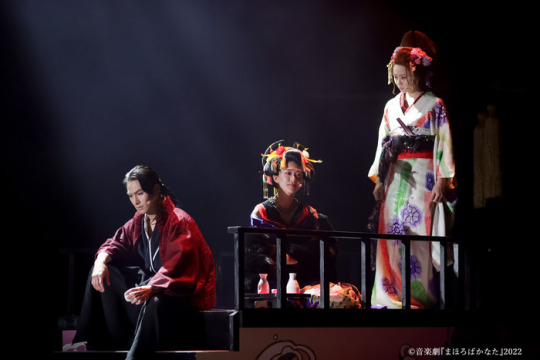
Why is Mahoroba Kanata attractive on it’s own?
It’s easy to be answered, because it has it all: great music, great story, overwhelming feelings, great actors and great acting, fun bits and good bits and and tearing apart sad parts, great visuals, a beautiful stage - did I forgot something?
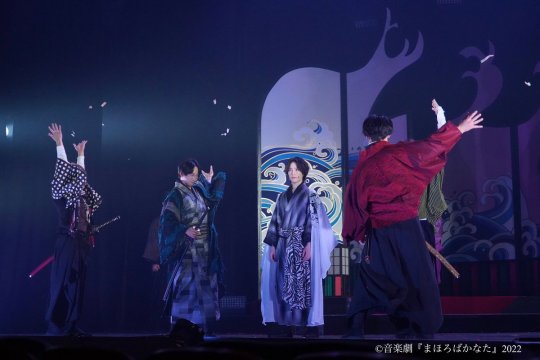

Whole cast list:
高杉晋作 Takasugi Shinsaku (1839-1867) samurai, who fought against the Bakufu
阪本奨悟 Sakamoto Shougo (https://twitter.com/Sakamoto_Shogo)
山縣狂介 Yamagata Aritomo (1838-1922)
糸川耀士郎 Itokawa Youjirou (https://twitter.com/yohhg)
大村蔵六 Oomura Zouroku (1825-1869)
和合真一 Wago Shin’ichi (https://twitter.com/wagoshin1)
伊藤春輔 Itou Hirobumi (1841-1909) politican in the later Meiji goverment
廣野凌大 Hirono Ryouta (https://twitter.com/hironobimistaff)
勝海舟 Katsu Kaishuu (1823-1899) former samurai, politican and bakufu supporter
根本正勝 Nemoto Masakazu (https://twitter.com/oni_fukucyo)
お雅 O-Masa (1845-1922), wife of Shinsaku, real name Masako
富田麻帆 Tomita Maho (https://twitter.com/maho_tomita6261)
文 Yoshida Fumi, later Katori Miwako (1843-1921), sister of Yoshida Shouin
田上真里奈 Tanoue Marina (https://twitter.com/tanouemarina)
おうの Ouno, Shinsaku’s lover (1843-1909), former Geiko, later nun
本西彩希帆 Motonishi Sakiho (https://twitter.com/sakiho_46)
すみ子 (Itou) Sumiko, Hirobumi’s ex wife
平井琴望 Hirai Kotomi (https://www.instagram.com/kotomi915/)
幾松 Ikumatsu (1843-1886) later Kido Matsuko (Katsuragis wife)
律 Ritsu (https://twitter.com/LizLiz_ritsu)
吉田松陰 (1830-1859), proponent of the Sonnou Jooi, got arrested and later executed
中村亀鶴 Nakamura Kikaku (2nd gen) (https://twitter.com/KIKAKU0618)
桂小五郎 Katsuragi Goro (1833-1877) later Kido Takayoshi, former samurai, Meiji goverment politican
松田凌 Matsuda Ryo (https://www.instagram.com/matsudaryo_9)
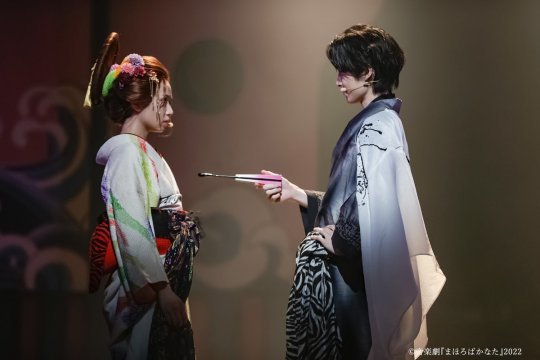



(pictures taken from the official twitter page : https://twitter.com/mahorobakanata
Still not convinced? Then hear for yourself (and thanks for sticking until the end)
youtube
youtube
Will you accept my request, Hakumyu-Community?
Thanks for listening to me (I decided to translate it within this year, but please be patient with me LIVE 3 is still being nosy on my desk (;^_^A)
#hakuouki#hakuouki musical#hakumyu#hakuoki#tomita maho#tanoue marina#motonishi sakiho#itokawa youjirou#sakamoto shougo#ritsu#hirai kotomi#Mahoroba Kanata#wago shinichi#nakamura kikaku#hirono ryouta#matsuda ryo#nemoto masakazu#history based characters#it's too good to be forgotten
12 notes
·
View notes
Text
12 September 2023, Tuesday
I got inspired today. I got out of bed today with a plan: To eat at Maisen because I have been craving their katsu curry. And as it so happens when I go out alone -- one thing led to another. After munching on the delicious cut of pork tenderloin crisp to perfection and smothered in luscious curry sauce, I decided to go to the bookstore. Fully booked (as always) with that one guard who always follows me through the aisles because I look so much like someone who shoplifts books (sarcastic). Traipsing along the rows of books I have memorized for visiting too often, I come across the poetry and memoirs section. And there, lodged between thick glossy books is a copy of 'The Unabridged Journals of Sylvia Plath'; and as I said, I got inspired. Listing down other books I want to buy before I forget: (1) Essays in Idleness by Yoshida Kenkō, (2) The Year of Magical Thinking by Joan Didion, (3) If not, Winter by Sappho, translated by Anne Carson.
I got inspired, and so the birth of this journal. I have accepted that I am bad at sticking with habits and routines because I fancy myself as a too spontaneous, easily distracted girl, but I would have to split myself open, harvest my soul, and ship it out to sea before I give up on writing; even if it is just about the silly happenstance that is my life.
So it begins...
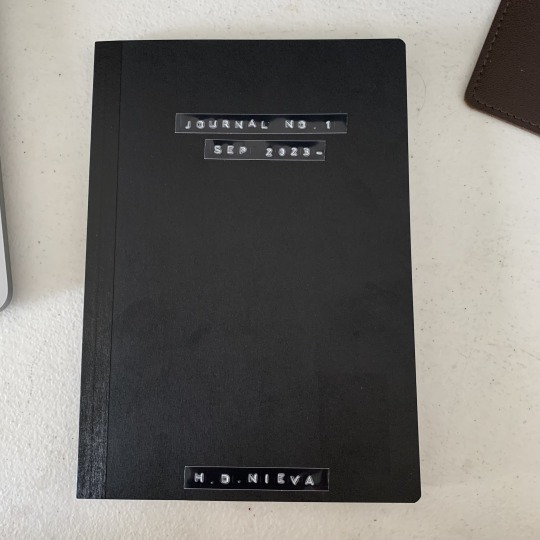
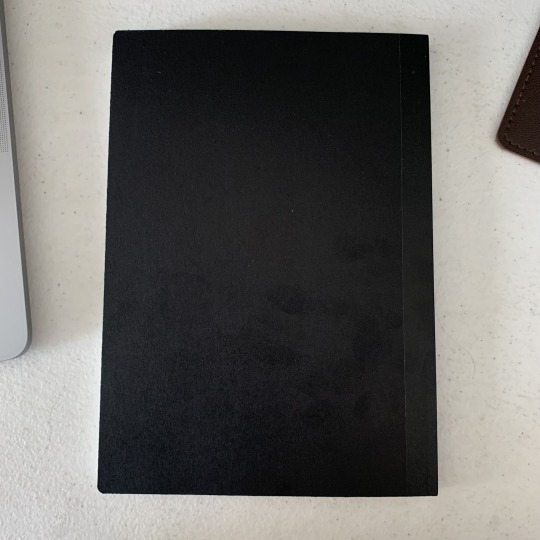
#anaviane#diary#diary entry#journal entry#journaling#the journal club#writing#writeblr#spilled writing#spilled thoughts#spilled ink#journal#anavianepix
5 notes
·
View notes
Text
There's an elephant in the room...
With my re-read of Peacemaker Kurogane, I started to lurk in some old forums and communities in LiveJournal that were created back when the series was climbing on it's popularity, and there's a topic in particular that called my attention due that it was also speculated here on tumblr. A topic that may had been hinted in the manga, and that lead to a shocking theory.
Who killed the Ichimura family?
The simple answer would be Yoshida, however, because one particular line before he almost killed Tetsunosuke, many people have speculated that he wasn't the killer, and instead, shift the blame on Hijikata given their similar physical appearances.
There's a lot to unpack here.
Where the doubt started?
It all started in chapter 27 of Shinsenfumi Imon Peacemaker, when Tetsunosuke confronts Yoshida for not killing him two years ago:
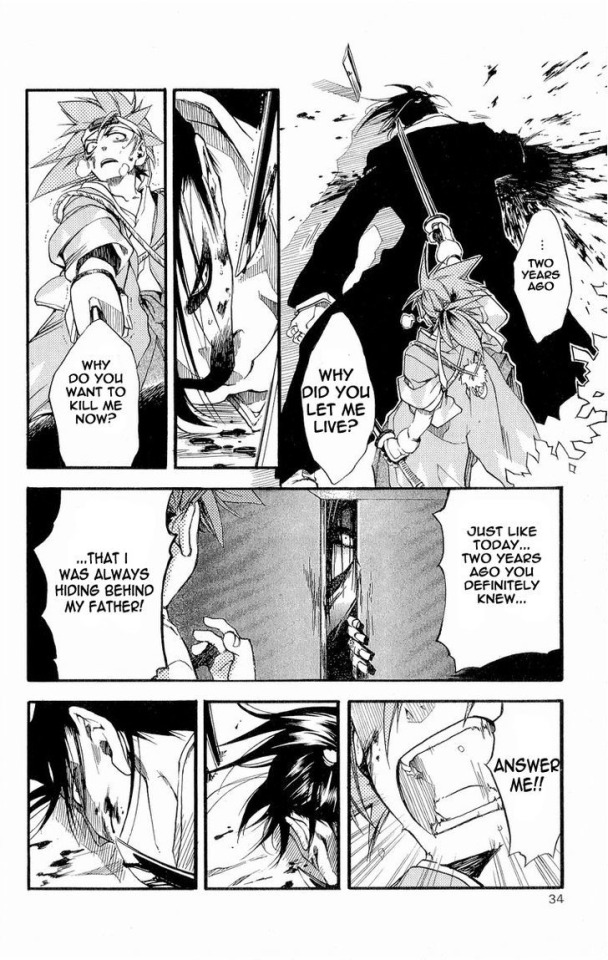
Yoshida replies this:

And then in chapter 16 of Peacemaker Kurogane, when Sakamoto Ryoma informs Katsu Kaishuu that the Ichimura brothers made it to the Shinsengumi, Katsu says this:

....which indeed creates a big question: did Yoshida really kill the Ichimura?
The reason why some people place the blame on Hijikata is that he physically resembles Yoshida and because he does seem to recognize the Ichimura surname in the very first chapter of Shinsengumi Imon Peacemaker and knows that Tetsunosuke is here for revenge:


This indeed looks so suspicious.
Later on Peacemaker Kurogane we do have some "hints" that Hijikata had to do something in order to help Kondou to become a samurai, we see this in chapter 56, the same one where Hijikata goes to Katsu Kaishuu to asks him to help him save Kondou's life:
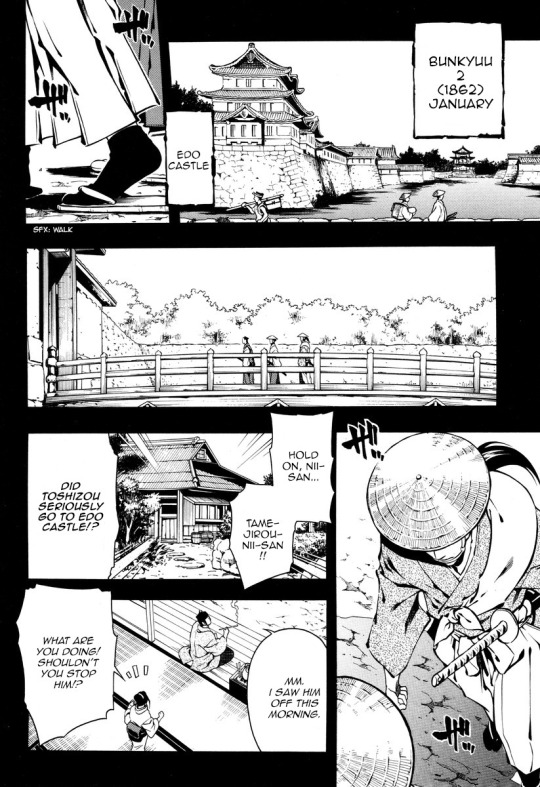
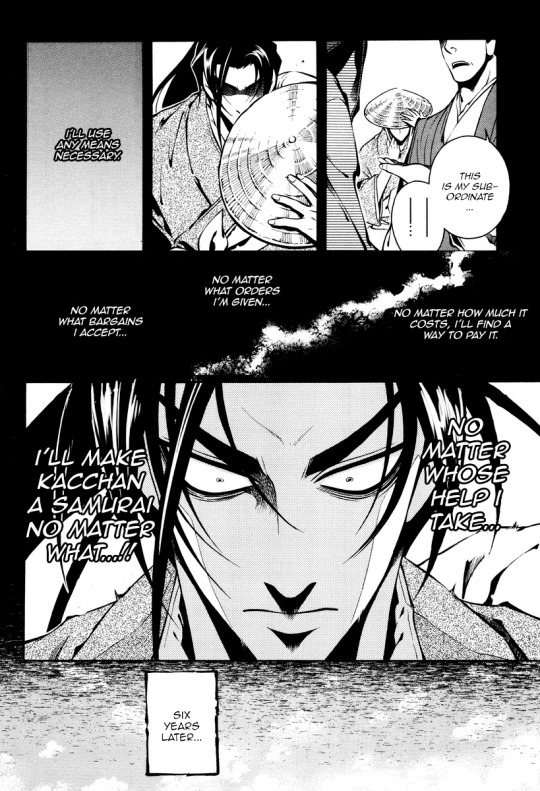

1862 was the same year Tetsunosuke's parents were killed, Hijikata says he'll do "anything" to make Kondou a samurai, and Kondou later reflects that "he doesn't has to do regrettable things for his sake, as he did back then". What thing Hijikata had to do in order to make Kondou a samurai? Why there's so much mystery surrounding it? Part of me, is fearing the worst.
However, on the other hand, while the theory does has it's substance, there's a lot that wouldn't make sense of it, both from a historical perspective AND a storytelling perspective, in my humble opinion.
Historical perspective:
The Shinsengumi didn't started to be active until 1863, when they were called the Roshigumi.
In the manga, is said that the Ichimura family was murdered "two years" prior the beginning of the series. The story starts in March 1864, which means the Ichimura parents were killed in 1862, when they lived in Ōgaki (for all the liberties Chrono took with Tetsunosuke's background, he did kept the fact he was born in the Ōgaki domain). In 1862, if my memory isn't mistaken, it was when the Shinsengumi started to be recruited only for them to travel to Kyoto and start working the next year. Hijikata was still a medicine peddler living in Edo - wouldn't make much sense he would travel to Ōgaki to assassinate ONE person, unless Chrono really wants to take a bigger liberty in the story - though for what we see in chapter 56, it all points out that Hijikata was in some sort of activity by the Shogunate at the beginning of 1862, but even so, something doesn't makes sense.
Another thing is that, just because there were people who wanted the Shogunate to go out, that doesn't means they all aligned with the same methods or ideas. Now I admit that this part isn't my strenght because I'm not too knowing in Japanese history, but there's a reason why the Choshuu and the Satsuma needed Sakamoto Ryoma's mediation in order to become an alliance, didn't they? (If someone knows more about this please comment!). That Katsu Kaishuu and Sakamoto Ryoma in the manga knew it was time for the Shogunate to end didn't meant they actually would had approved of the attacks against foreigners by radicals (though as a fun fact, the historical Ryoma actually TRIED to assasinate Katsu Kaishuu before they became allies, but I'm sticking here to the manga characterizations because comparing the historical vs manga portrayals would be a topic for another post).
There's also the fact it's said in the manga that Tetsunosuke's father actually had the support of the Shogunate, he was a translator who went with the first embassy from Japan to the USA, so it doesn't makes any sense that they would had ordered to kill an officer of their own who as far as we know, didn't had any anti-shogun ideas, specially when lots of discontent against the Shogunate started by how it dealt with the opening of the country and the entrance of foreigners.
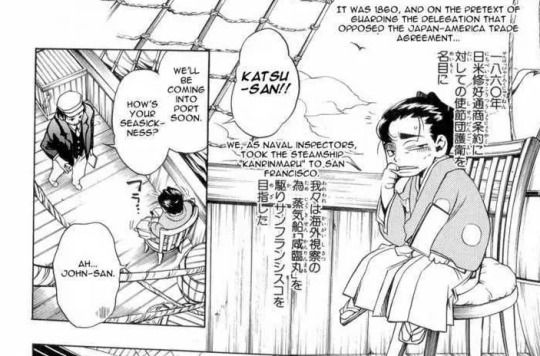
This is when Katsu Kaishuu recalls meeting Tetsunosuke's father, who worked as a translator. Sakamoto later confirms this to Tetsunosuke in chapter 20.
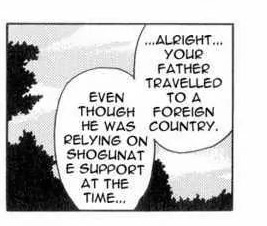
However, this does fits much better with the official narrative presented in the manga that Tetsunosuke's father was killed by a Choshuu radical who hated foreigners, specially when those incidents did happened in real life (not to Tetsu's father, but to other collaborating Japanese):
" From 1859, the ports of Nagasaki, Hakodate and Yokohama became open to foreign traders as a consequence of the Treaties.[19] Foreigners arrived in Yokohama and Kanagawa in great numbers, giving rise to trouble with the samurai.[18] Violence increased against the foreigners and those who dealt with them. Murders of foreigners and collaborating Japanese soon followed. On 26 August 1859, a Russian sailor was cut to pieces in the streets of Yokohama.[18] In early 1860, two Dutch captains were slaughtered, also in Yokohama.[18] Chinese and native servants of foreigners were also killed.[18]" (source)
(Not a fan of quoting Wikipedia, but I don't own any book of Japanese history that I can use as a source. Again if any of you do please please comment and add your thoughts so you can enlighten me and the rest of us!!!)
Okay, so that's the historical perspective, now what about the storytelling perspective?
Storytelling perspective:
It's very well established in the manga that Yoshida hated foreigners, loved to set things on fire and even planned to participate in the great Kyoto fire to the point that Katsura Katsugoro, the leader of the Choshuu, told him to just stop. (chapter 13 of Shinsengumi Imon Peacemaker)
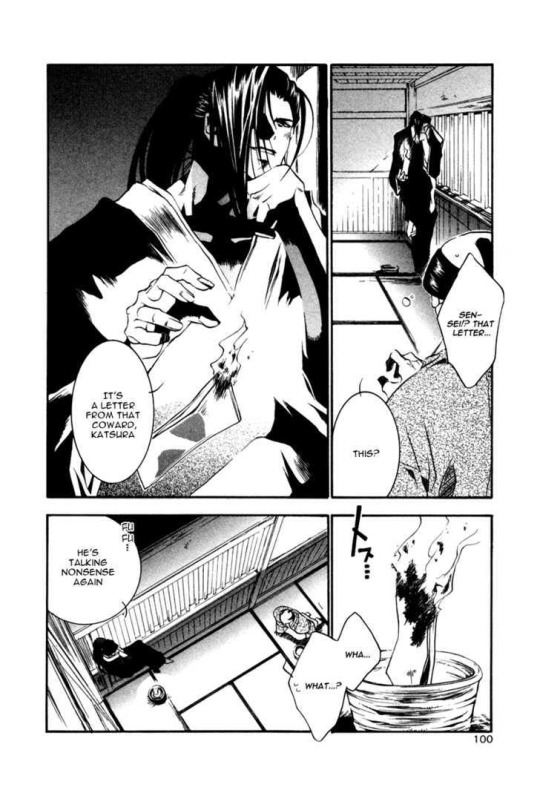
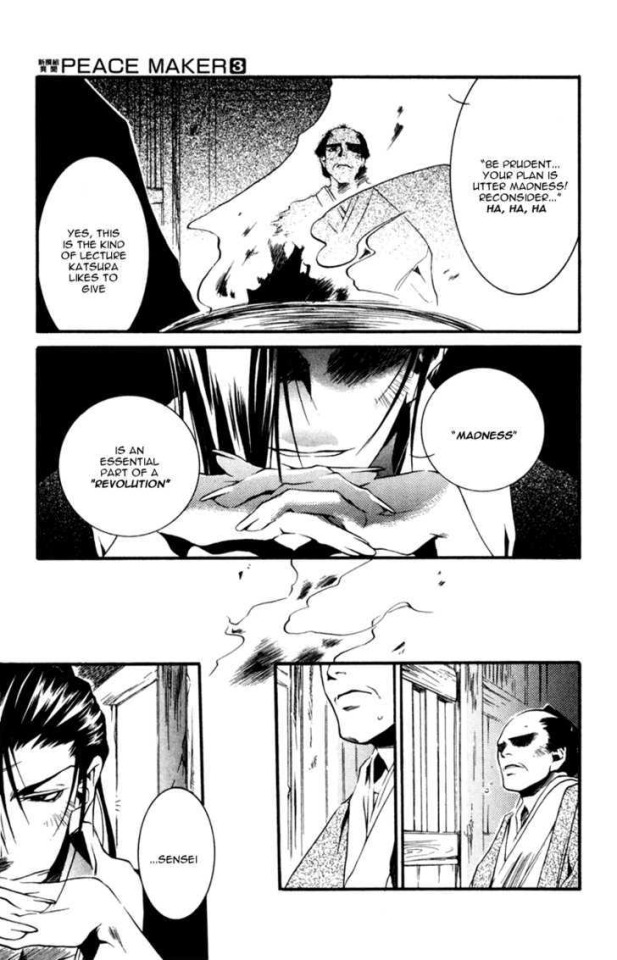
Hijikata even recalls this about him chapters earlier:


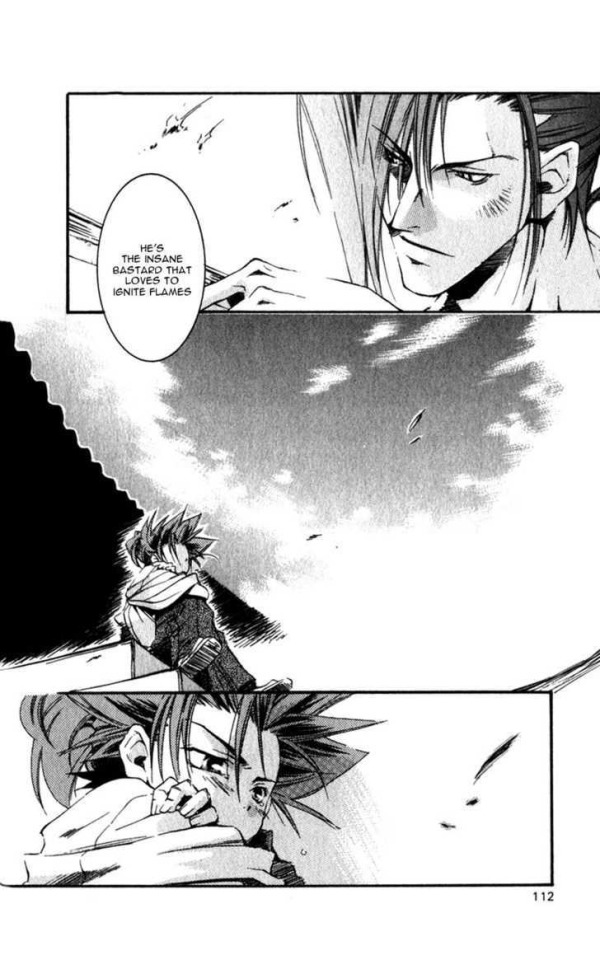
On the other hand, we know from the first chapter that even if Tetsunosuke doesn't knows Yoshida's face, he does recall his eyes! If Hijikata was the actual murderer....wouldn't had he recognized him by looking at his eyes?
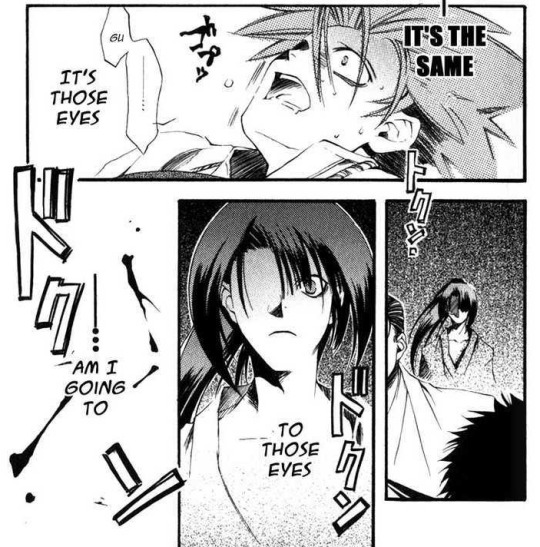
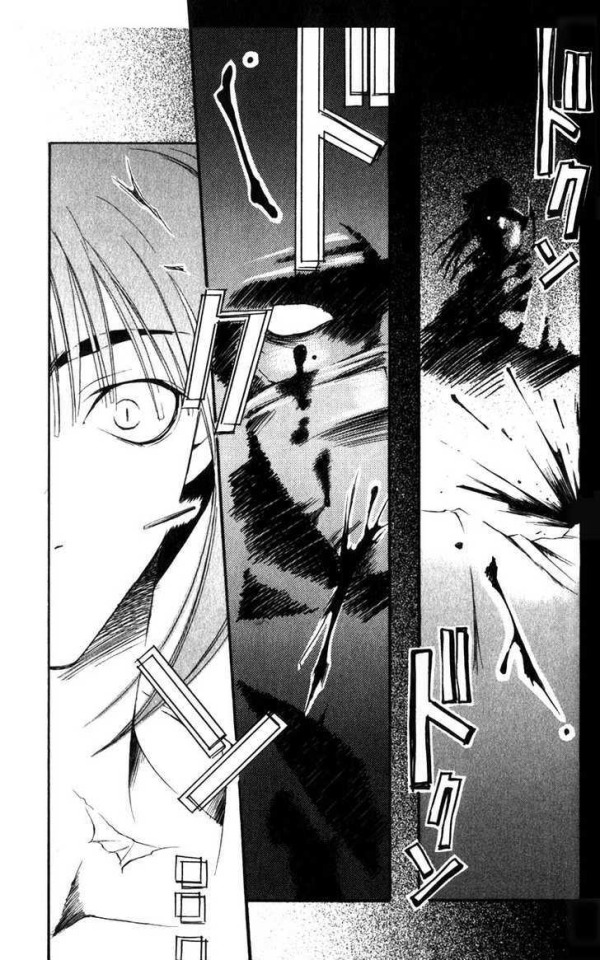
Instead, Tetsunosuke seems immediately recognize Yoshida BEFORE he even knows he's a Choshuu rounin, and Yoshida seems to recognize him as well upon hearing the surname Ichimura and seeing the strong physical resemblance between Tatsunosuke and his father. Otherwise, why the heck would had Yoshida wanted to kill Tetsunosuke? And by the same method that his parents died?



So yeah, I actually believe it was really Yoshida who did it, and the reason why he didn't knew what Tetsunosuke was talking about was because he didn't knew he was hiding, otherwise he would had killed him on spot.
Personally, if Chrono ever pulls out that it was Hijikata and not Yoshida, it would feel more like a plot twist just for shock value, because as pointed in the arguments above, it doesn't makes sense both from historical and storytelling reasons. Futhermore, it would tarnish Hijikata's image (yeah, we know he was ruthless, but to let an innocent child burn to death would be crossing the line) and it would made Suzu's tragedy even more unfair than it actually is. Suzu went through a lot: he starved and sold himself to survive after his master died, to the point he became mentally ill as a result, so if Yoshida at the end wasn't the one who killed the Ichimuras and Tetsunosuke seeked revenge on the wrong guy, then it would made his story the double of unfair than it actually is. Suzu's story is meant to shown Tetsunosuke that with revenge there are always innocent people who by association end paying the sins of those who commited it, and to not have Yoshida being the murderer it would be...well...pretty bad.
As for why Hijikata heard about the Ichimuras...maybe they were informed? Or he found out when researching about Yoshida? I feel like if he was the actual killer it would had pop up often in his mind. After all, we know his actual desire to protect Tetsunosuke is rooted on his own guilt for what he did to Souji in the past, that's why he feels responsible about him. The foreshadowing in my opinion would had been stronger, like the foreshadowing that Tatsunosuke was the Shinigami - which was a given way before it was revealed in recent manga chapters.
So...here are my thoughts on the matter.
5 notes
·
View notes
Text

@katsu-at-the-bottom said: "You're friends with a politician? What's his name, No-Good Tora? I guess if you get along with him, maybe he isn't so bad?"
Unprompted | Always accepting

“Oh yeah. His real name’s Toranosuke Yoshida. He’s had some... political trouble in the past with some parties. I don’t really understand all of it, but thanks to my help, he’s doing a lot better now. You interested in seeing him?”
1 note
·
View note
Text
Danganronpa: Distorted Reality Crew!
Cast
Sumiko Abe- AKP
CCC Discord: aykaypee
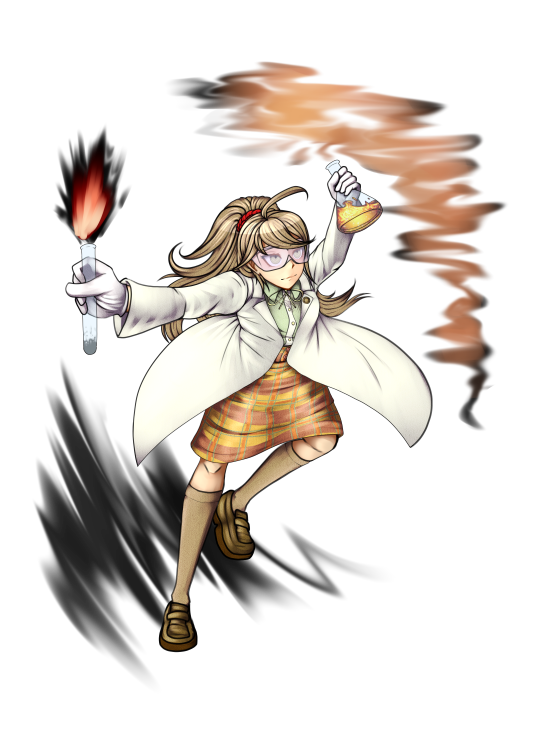
Daichi Fukami- AJT
CCC Instagram Twitter

Sachiko Yoshida- Mage'O'Mochi
CCC Twitter

Tsubasa Maeda- V-Meister
CCC YouTube

Atsuko Chiba- Victimvideo
CCC YouTube

Katsu Akagawa- Ryan Beirl
CCC Twitter

Miuna Kaneko- Jva25
CCC Twitter

Arata Yamamoto- Paul H
CCC Twitter

Maiko Shimizu- SpilledInk
CCC Twitter
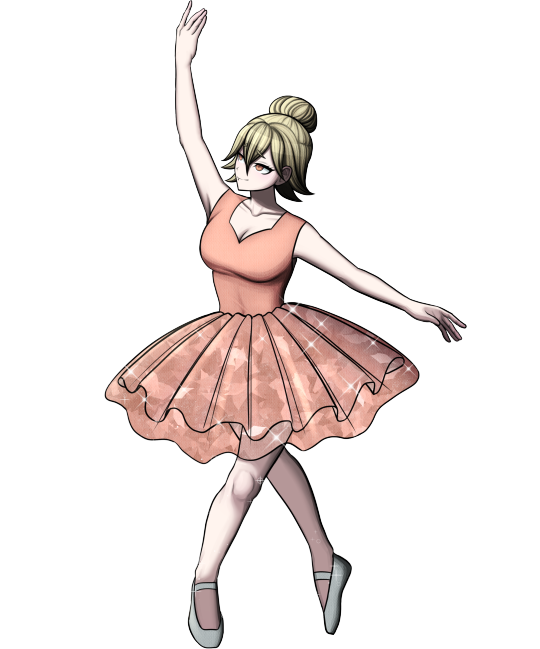
Tamaki Inoue- Nijbor
CCC

Emiko Ishii- Arin
CCC

Jun Sasaki- Travis Apex
CCC Twitter
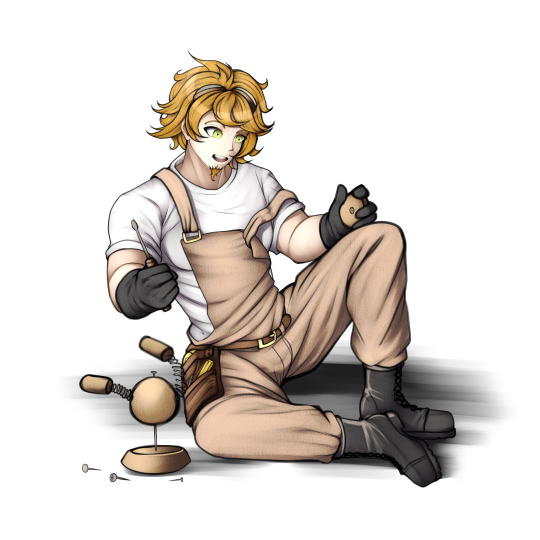
Hibiki Ikeda- NinfiaVA
CCC Twitter YouTube

Naoki Honda- LmaoD4C
CCC Twitter

Chou Hachimitsu- PinkxClouds
CCC

Yuzuru Furukawa- Sumako
CCC Discord: sumako

Nori Mori- RayVA
CCC Twitter Instagram YouTube
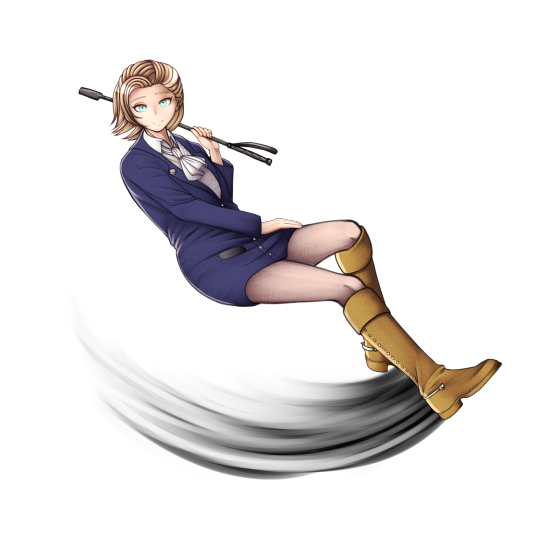
Shinobu Amano- Atlas
CCC YouTube

Monokuma- J-Ros
CCC

Hope's Peak Recruiter- Guardian
CCC

Production Crew
Creator/Director/Writer/Editor:
JAM
Twitter Discord: jam2_003
Creator/Artist/Writer/Editor:
Milalex
Twitter Instagram
Writer/Editor:
Sun
Discord: existential_sun CCC
CG/Splash Art Artist:
Erriz
Twitter Fiverr
Splash Art Artist:
FulltimeAngel13
Twitter Fiverr
Sprite Artist:
AllineDlvdl
Twitter
Background Artist:
Soanala
Fiverr
Opening Sequence:
Katsuamv
Instagram
Animations:
LK
Twitter
Character Intros:
that's
Fiverr
Pixel Art:
Snoof333
Twitter
0 notes
Photo

050ポスター THE BEST SIX AD・田中一光 B1 1978
Illustration by Katsu Yoshida for 'The Best Six’ (Fashion designers), 1978 . The best six designers were: #IsseyMiyake #StephenBurrows #ThierryMugler #GianniVersace #JeanMuir #HanaeMori . #katsuyoshida #katsu #吉田カツ #art #artist #japan #japon #illustration #japaneseillustration #fashionillustration #fashion #mode #face #makeup #pastel #pastels #fashionnews #70s #1970s #1978
5 notes
·
View notes
Photo
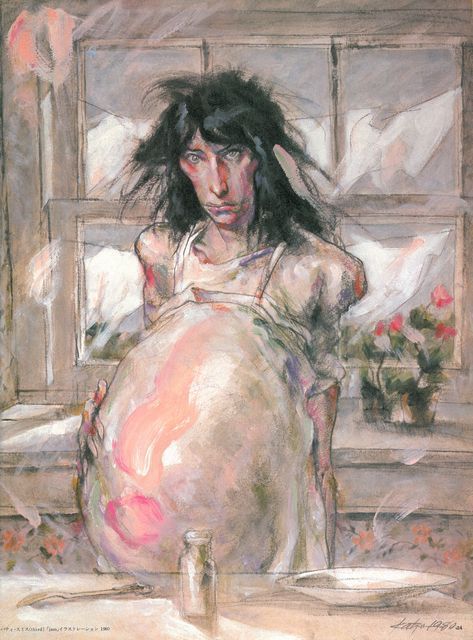
https://www.pinterest.com/pin/496592296392012104/
5 notes
·
View notes
Text
Saito Hajime [SHQ]

Born in Tenpo 15 (1844) year of the Dragon (element:wood), 1st day (or 2nd day) of the 1st month. Died Taisho 4 (1915), September 28, at age 71.
Hometown: Edo, Musashi Province (now Tokyo).
Style: Mugai ryu, Itto-ryu, Mizoguchi ha Itto Ryu, Tennen Rishin Ryu (he may have studied more lineages including jiujitsu and Keishi ryu a conglemeration of numerous lineages into a "standard" form used by the TMPD)
5 Names: Yamaguchi Hajime, Saitou Hajime, Yamaguchi Jiro, Ichinohe Denpachi and Fujita Goro.
His favorite sword was the Settsu Juu Ikeda Kishinmaru Kunishige (Ikeda Kishinmaru Kunishige or Fierce God Kunishige)). Length—2 shaku, 3 sun, 1 bu. Download A History of One Sword
Read about one of his swords and the royal wedding in 1928
Family
Hajime was born into the house of a Shogunal retainer.
Father: Yuusuke a foot soldier samurai there is talk that he was a low level member of the shogunate's information gathering network.
Mother: Masu a farmer from Kawagoe
Brother: Hiroaki born in 1836 who later became a math teacher at the Honma estate and held numerous jobs in the Ministry of Finance, tax office, counselor of Higashishirakawa-gun in Fukushima, counselor and registrar at Fukushima Local Court. He retired in 1898. Married to a woman named Sei.
Niece: Yamaguchi Yuki (Yukiko) was the daughter of Hiroaki and Sei. She later attended and graduated from Tokyo Women's Normal School (present day Ochanomizu). Yuki taught music and embroidery. This was the same school where Takagi Tokio, and later Goro was employed. Yuki's early death ended the Yamaguchi family line. Visit the Takagi Tokio Page to learn more.
Sister: O-Katsu (Hisa) married Soma Yoshiaki, chief physician of the Mito Tokugawa clan.
His family was from Akashi in Harima, because his father was an ashigaru (low-rank foot soldier samurai) of the Akashi han. Hajime’s father, entrusting family affairs to his younger sister, went to serve in Edo, earning a small sum and buying stocks for the family with it as well as the rank of samurai.
When he was older, during the Meiji Era, he visited his family's grave which is located somewhere in Fukushima Prefecture. This detail is from Takagi Morinosuke's daughter who said Uncle Fujita would stay at their home. Morinosuke was Takagi Tokio's younger brother.
The Family of Saitou Hajime/Fujita Goro
For more information regarding the Fujita family please visit
http://www.1to5.net/saito/family/family.html
http://hajime3.hp.infoseek.co.jp/fujitake.html
if you cannot read Japanese please translate the page using http://www.nifty.com/globalgate
Hajime's wife Tokio and eldest son Tsutomu.
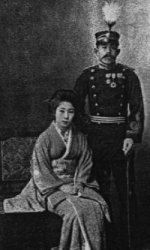
Tsutomu's wife, Midori, recorded the Fujita family history.
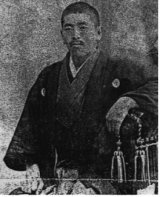
Hajime and Tokio's second son Tsuyoshi who lived abroad many years (perhaps even the USA).

Hajime & Tokio's youngest son, Tatsuo. He was adopted into the Numazawa family shortly after birth. Mrs. Numazawa was Tokio's cousin.The Numazawas had no children and were in danger of having their family become extinct and so asked the Fujitas if they would allow their coming baby to be adopted.Apparently he wasn't made aware of the adoption until he was in college .
(https://web.archive.org/web/20041212085834/http://www.shinsengumihq.com:80/fujita-family.htm)
Life as Yamaguchi Hajime [return to index]
In Ansei 5 (1858), Yamaguchi Hajime had his genpuku (coming of age ceremony). After this, he studied Itto-ryu swordsmanship in the dojo at the Aizu clan’s Edo mansion (despite the many branches of Itto-ryu, Aizu retainers studied Mizoguchi-ha Itto ryu). This kindness of the Aizu clan was brought about by Hajime’s father’s service in Edo (comment: kindness of teaching Itto-ryu to an incredibly low-ranking samurai’s son, I suppose).
Life as Saitou Hajime [return to index]
At 19, he mistakenly killed a man and was forced to flee from Edo to Kyoto. He may have started to use the lastname "Saitou" soon afterwards.
In Kyoto, he became an assistant instructor (Shihan dai) in Yoshida’s Taishi Ryu dojo (probably Yoshida Katsumi of the Shotoku Taishi Ryu).
After this, in Bunkyu 3 (1863), he met up with his old friend Kondou (Isami), who had just arrived in Kyoto with the Roushitai. Before long, Saitou had entered the Mibu Roushigumi which became the Shinsengumi. There is evidence to suggest that Saitou knew Kondou back at the Shieikan Dojo in Tama.
He also participated in a martial arts demonstration before Matsudaira Katamori daimyo of Aizu alongside Hijikata, Toudou, and Okita. Saitou fought against Nagakura. It’s said that in swordsmanship, he was one of the strongest of the Shinsengumi, on par with Okita himself. Yagi Tamesaburo, son of the Yagi family where the Shinsengumi lived, mentioned that Saitou, with a sword, would fight with Yamazaki Susumu (Shinsengumi spy) who used the nagamaki or short naginata.
A very mysterious fellow and there is a strong theory that he was a spy for Aizu within the Shinsengumi. Conducted internal spying on possible enemy operatives (i.e. the Itou case), as well as monitoring other intelligence and possible enemy activity. He was not only a captain, but also Hijikata's assistant and instructor of kenjutsu. Saitou accompanied Hijikata on various recruitment missions to Osaka and Edo (present day Tokyo).
During the raid on Ikedaya, he arrived with the second group alongside Hijikata and Inoue Genzaburo. The first group was led by Kondou, Okita and Nagakura.
Saitou was punished with kinshin, detention, after breaking curfew by attending a party with Nagakura at Itou's invitation.
A survivor of the Itou Affair, Abe Juroo, mentioned that Saitou, who had accompanied the splinter group as a spy, stole 50 ryo from Itou's desk and left the group to meet with his geisha, Aioi Tayu. However, this may have been Saitou's plan to return to the Shinsengumi.
Life as Yamaguchi Jiro
After the Itou Affair he may have started to use the name "Jiro" as Kondou requested a man by this name.
Boshin War [return to index]
At Toba and Fushimi on January 6, 1868, he and Nagakura guarded the rear of the retreating shogunate army. He was injured and hospitalized on January 19th.
Due to his injury, Hijikata Toshizo designated Saitou Hajime (Yamaguchi Jiro) to lead the Shinsengumi in Aizu. Hijikata, Saitou, Nakajima Nobori and Shimada Kai and followers fought at the Bonari Pass, the entrance to Aizu.There are many versions of what happened to the Shinsengumi in Aizu but Hijikata and his men had to leave the domain, perhaps to get reinforcements. Saitou and a small group of Shinsengumi fought at Buddha Hall (Nyoraido pictures [1] [2] [3]). Saitou continued to fight in the Phoenix troop (Aizu categorized fighters by age into Byakkotai/White Tigers, Phoenix, Dragon and Turtle troops) using guerrilla warfare under the command of Sagawa Kanbei (1831-1877) [Pic].
At the Battle of Aizu, Yamamoto Yaeko (sister of Yamamoto Kakuma, and later, the wife of Niishima Jo (famous Japanese Christian and founder of Doshisha University) left with Saitou for the front. Yaeko used a rifle, and outdid everyone in “masculine braveness” (?), fighting side by side with the men. She tried cutting off her hair with her wakizashi (short sword), but it is said that “Takagi Morinosuke’s elder sister, Tokio, cut her (Yaeko’s) hair”.
After the collapse of the Shinsengumi, he stayed for awhile in Aizu as a prisoner of war, and it’s thought that he was with childhood friends there (from his days at the Itto-ryu dojo).
Life as Ichinohe Denpachi [return to index]
After Aizu's surrender, prisoners were held at Inawashiro. Saitou, using the name Ichinohe Denpachi was held at Sooji-ji Temple in Niigata before he was sent to Aomori in 1869-70. It was during his exile in Aomori were he met his first wife.
Aomori [return to index]
Countless Aizu families immigrated to this northern region. To see images of the location where he and his first wife, Yaso, and Tokio lived please visit this [page] and insert the address into http://www.nifty.com/globalgate. The webpage is an outstanding example of how a fan was able to research a minor historical detail and share his work with others.
Life in the Meiji Era as Fujita Goro [return to index]
Saitou (Fujita Goro) and Nagakura built a memorial for Hijikata Toshizo and Kondou Isami with Matsumoto Ryojun in 1875. There are details which suggest that he stayed in touch with other members of the Shinsengumi and a member of the Kondou family.
After the “Restoration”, he worked in the Tokyo Metropolitan Police Department (TMPD Headquarters during the Meiji Era), and lived the rest of his life under the name Fujita Goro from 1870 onwards which was given by Matsudaira Katamori, daimyo of Aizu. The exact date of when he entered the force is not certain however he retired in 1891. He may have received this job tip through Sagawa Kanbei and Toshiyoshi Kawaji who was conducting recruitment amongst samurai not connected to the Satsuma domain. In the TMPD he was a "mittei" or spy, sergeant, assistant inspector, inspector and lastly chief inspector an important position which made him a liaison between his district, local chief and the police commissioner. He was also, occasionally, a bodyguard for members of the royal family such as the emperor's mother, thus he occasionally worked as a member of the Imperial Guard (which used men from directly out of TMPD). He was also a bodyguard to Inoue Kaoru [link1] [link2]. Was Goro at this party hosted by Inoue?
Seinan War (Satsuma Rebellion or Southwest War) [return to index]
Many former samurai, especially Aizu samurai volunteered to fight their former enemy of the Boshin War, Satsuma, as members of the Imperial Army. The Tokyo Metropolitan Police Department was dissolved and dispatched in phases to Kyushu. Fujita Goro was sent on May 8, 1877.
Fujita Goro was in a newspaper article covering the Seinan War printed in Tokyo Nichinichi (also known as Tokyo Nichinichi Shimbun edited by Fukuchi Gen'ichirou) newspaper on August 23, 1877. The Tokyo Nichinichi was easily the most widely circulated and popular newspaper The actual events occurred on July 12th of the that year when Goro commanded 107 men and robbed 2 cannons. The Seinan War took place in the mountainous regions of Kyushu where Saigo Takamori's men would frequently mount cannons on top of hills and conduct guerilla warfare. He was shot in this battle. He returned to Tokyo on October 28, 1877. [American Edward S. Morse's description of troops returning from the Seinan War]
Awarded the medal "Order of the Blue Paulownia" and 100 yen (a huge sum for the era) in 1879 for his work in the Seinan War of 1877. Due to the government's financial hardship, there was a delay in compensation.
He worked in the army briefly in 1881
Goro participated in two kendo tournaments sponsored by the police department. One on November 26, 1882 and the last on January 23, 1890.
Tokyo Education Museum (chronology) in the security department from 1891-1899 through his connection with Takamine Hideo (Takagi Tokio's cousin). [American Edward S. Morse's description of the early days of the Education Museum]
Tokyo Women's Normal School 1899-1909 through his connection with Takagi Tokio and Takamine Hideo. Fujita (Saitou) and Tokio served together at Tokyo’s Joushi Takashi (Women’s High School, now Ochanomizu University (the school went through numerous name changes and it sometimes known as Tokyo joshi shihan gakko). When the school day would be out, he would be in charge of traffic control for rickshaws. He was also in charge of finances and general affairs.
Stuff about Saitou (original—Hajime-san Are-kore- literally “Hajime-san this and that”)
--Was not a man predisposed to small talk.
-- According to the testimony of those who knew him, Saitou was tall, and his eyebrows served to accentuate his direct, clear, piercing gaze (comment: the “light shone from his eyes” line). Throughout his life, he was rather husky, but later on in life, he put on some weight. As for the remaining portrait of him, his eldest son served as the model. It’s said that a real photo of him exists in the Shinsengumi Houmotsukan (comment: ‘Shinsengumi Treasure House’. No idea where this is, but it’s probably the picture that was in the lower area of the photo of the display with his haori in it).
--There is word that he was left-handed.
--Also, after the Restoration, he was known for washing and changing his underwear (known in the Bakumatsu as a fundoshi) every day, washing it thoroughly and striking it with both hands to get the wrinkles out and hanging it with a pin.
--Whenever he sat, he would sit straight up in seiza position, always keeping aware, so that if attacked he could react instantly.
--In his later years, he was quiet as always. However, he would sometimes drink sake with his brother in law Morinosuke, as well as Yamakawa Hiroshi, Yamakawa Kenjiro, and Takamine Hideo and would indignantly lament the evils of the times (comment: Like Hiko Seijuurou in the Rurouni Kenshin OAV: “They are afflicted—the times, and the mind of man…”)
--When he wore shoes, he always wore them decently, and never walked with dragging his shoes.
--Even when it was very hot, he never bared his one shoulder or wound a towel around his neck. The towel would be used to wipe sweat.
--He repeatedly said "Tie your sash tightly: don't leave it loose and untidy!" The sash is ofcourse a men's obi (kaku or heko)
More of Saitou or Fujita Goro's sayings can be found with members of the Yamakawa family.
Women In His Life [return to index]
While in the Shinsengumi he was connected with Aioi Tayu a geisha from Shimabara who later moved to Gion.
August 25, 1871 he married Shinoda Yaso, who was 4 years older than him, in Tonami (Aomori where Aizu refugees were sent after their defeat in the Boshin War). Both Goro and Yaso lived with the Kurasawa family. Takagi Tokio was an adopted daughter of the Kurasawa family. Did her connection to the Kurasawas allow her and Goro to meet? Yes, Goro was married to Yaso (who had no male guardian as her father and brother were dead). What happened to Yaso? After Goro left for Tokyo she was adopted into the Kurasawa family! Did the Kurasawa's take in Yaso and spare Tokio further hardship by having her marry Goro? We will never know. Yaso died in 1876. The information was provided by our friend Tama.
June 10, 1874 he married Takagi Tokio (born April 15, 1846 died 1921) the eldest daughter of Aizu retainer Takagi Kojuurou. At this time, Fujita (Saitou) was 31, and Tokio was 2 years younger than him. The lesser go-betweens in the marriage deal were Yamakawa Hiroshi and Sagawa Kanbee (Aizu chief retainer), and the main go-between was Lord Matsudaira Katamori himself. Teruhime, was also involved with this union.
Learn More About Takagi Tokio at
March in 1908 (Meiji 41).
“Fujita Tokio, birth year 1846 (Kooka 1), a wife of Fujita Goroo who is a clerk of Tokyo Women’s Teacher College, a house master of women’s dormitory, and their address is 30 Masago-cho, Hongoo-ku.”
Fujita Family Kamon (Crest) [return to index]
The Fujita family kamon, crest, has many meanings. Bamboo symbolizes strength and endurance because it is hard to kill. The imagery evokes the values of constancy, fidelity, vitality and prosperity due to its fast growth by sending forth shoots. Bamboo is also a common theme in Aizu's art. For instance, bamboo designs can be seen on lacquerware from the region. Family crests are not unique to one family. In fact, this same kamon can be found in several movies and used by various characters some of whom are connected to Aizu.
Death Fujita Goro's stormy life ended on September 28th in 1915 (Taisho 15). Perhaps, in emulation of 2 swordsmen of the Mugai Ryu lineage, he too died sitting upon cushions in the seiza position.
Yamakawa Hiroshi 1845 - 1898 [PIC] [return to index] [MORE INFO]
other names are Yamakawa Ookura and Yamakawa Taizo
During the siege of Aizu by the Imperial Army he came up with the idea of smuggling samurai, disguised as peasants, back into the castle by utilizing the dragon dance, usually performed in the domain during the spring.
He supervised the settlement of Aizu refugees at the Tonami, Aomori Prefecture and was an assistant to Matsudaira Katamori. Yamakawa Hiroshi was one of the three matchmakers for the marriage between Fujita Goro and Takagi Tokio. Once the Yamakawa household moved from Aomori to Tokyo, the family encountered fellow compatriots such as Shiba Goro. He later joined the army and became Chief of Staff during the Seinan War (Satsuma Rebellion) of 1877.
The Yamakawa Shogun residence was in Tokyo Ushigome-Wakamatsu cho, 3rd lot. It had a stable.When Fujita had days off, he would go to the Yamakawa residence and drink sake, and his spirit would burn. Many many people visited all year round, attested to by Ookura (Yamakawa Hiroshi) being a person of virtue as well as a "Center of (gathering for) Aizu People. So the many comings and goings were a matter of course. Among those who visited can be seen the name of Fujita Goro.
Fujita Goro. Of course, it goes without saying that this is Shinsengumi 3rd captain, Saitou Hajime.
The time of his frequent visits then must be around the time that Ookura had long since retired from the Police Office and had become headmaster of the "Normal School" (I think "Normal School," Shihan-
gakko, should actually be translated "Military Academy") The man who, as Yamaguchi Jiro, left his fame and renown in many
places in the course of the Boshin War's Aizu front. Fujita, after Hijikata Toshizo left Aizu, commanded the remaining
Shinsengumi men, sharing in Aizu's fate, following the people to Tonami, and then fighting in the Seinan War, always remaining by the side of Aizu people.Looking at it from Fujita's perspective, his
visits to the Yamakawa residence must have been very calming. Fujita Goro "When you draw your sword with the intent to kill, don't waste your time posturing like in kenjutsu. Just kill your enemy on the spot."
(from another volunteer translator: "When you actually fight somebody with a real sword, never mind about taking a correct
posture as you would in your fencing trainings; you just have to go forward holding your sword up high. Then the next moment you'd find your oppenent collapsed on the ground.")
Fujita Goro "I want my bones to be buried next to the [mass?] grave of the men who died at Amida-ji in the Aizu Boshin War"
Today, Fujita Goro's soul, as was his wish, rests alongside those of his war comrades in Amida-ji, sharing in their eternal rest
Yamakawa Kenjiro (also spelled Kenjiroo) 1854 - 1931 [return to index] [PIC]
Biography Written by Prof. Takagi Tasuku [MORE INFO]
Yamakawa Kenjiro spoke to Shimozawa Kan (Shinsengumi researcher best known for his creation of Zatoichi the blind swordsman) about the Incident at Tenmaya during which Saitou Hajime became uncomfortable in his chainmail. He had a hard time removing the chainmail. Just as he was fumbling with the chain on his hand, the enemy rushed in...
Saitou Hajime "In a real fight with real swords, people cannot think how to knock down their enemy. We just fight off one’s head (react---do not "think"). While I rampaged around in this evening as in the usual fight, one of enemies said, ‘he is wearing something. Don’t cut him, but thrust with sword.’ Therefore, I thought if they started to thrust me with sword, I would wait for it.”
Takamine Hideo [PIC] [info] was Takagi Tokio's cousin. He also recommended both Tokio and later Goro to get jobs at Tokyo Women's Normal School (a school which trained future teachers). You can learn about Hideo AND Tokio [here]
[the following excerpt may be useful if you take a look at the Fujita family tree translated by Masayoshi]
Fuijita Midori (wife of Fujita Tsutomu) told her daughter in law Fujita Natsuko (wife of Fujita Minoru) that there was a magnificent shed in [Hideo Takamine's] homestead, and it was full of treasures such as swords or arts treasures. Although the shed was always locked, only Goro was allowed to enter this freely. Since Goro was good at judging swords, he was often asked to judge or repair swords.
Takamine Keiko or Tsuchida Keiko was the daughter of Hideo. "Mr. Fujita Goro often visited my parents' house, the Takamines. He liked drinking very much, and he always drank when he visited us. He was very taciturn, tall and thin. He was dignified, and his attitudes did not deny our expectation. At that time, my father was the principle of the teacher's college, and Mr. Fujita Goroo was working as a regulator there. When it rained, the school became very crowded because many (1)jinrikisha which came to pick up students went into the school gate. In such a rainy day, I often saw him directing the drivers of jinrikisha in order to regulate traffic." Keiko will also discuss her memories of Tokio.
Learn about Fujita Goro's connection with famous Meiji Era author Higuchi Ichiyo [here]
Koga Tanji, Fujita Goro's best friend of many years, also lived in the same neighborhood. Both men were "war comrades" and worked as "mittei", spies, for the TMPD. After retiring from the force, Koga became a fireman, (firefighting was supervised by the police) and he "died in the performance of job" which I interpret as dying in the line of duty.
On September 28, 1928, Setsuko "Setsu" Matsudaira the granddaughter of Matsudaira Katamori married Prince Chichibu thereby restoring the honor of Aizu. The domain was labelled as enemy of the "new" state or Meiji government because it was loyal to the bakufu (Shogunate). Amongst the hundreds of important wedding gifts was a NAGAMICHI wakizashi (short sword) formerly owned by Fujita Goro. In return, Matsudaira Tsuneo, son of Katamori, gave Fujita Tsutomu a Nanki Shigekuni [learn more] formerly owned by Sugano Gonbe’e, karou (high ranking retainer) of Aizu. Before the wedding, Setsuko Matsudaira visited Aizu and was greeted with parades and festivities. Thus, the importance of this wedding cannot be stressed enough. September 28th is also the anniversary of Fujita Goro's passing.
To learn more please read
The Silver Drum: A Japanese Imperial Memoir
By Setsuko Princess Chichibu
ISBN 1860340040
Photograph [return to index]
Besides the painting of Yamaguchi Jiro by Nakajima Nobori and the purported image of Fujita Goro taken at the end of the Seinan War there is yet one more photo of this mysterious man. A publication known as the Rekishi Dokuhon ISBN: B000678JHS received a photo from the Fujita family descendants. The black and white photo is of Fujita Tsuyoshi, Goro and Tokio's second son, marriage or engagement around the year 1914. In the back row is an elderly man with a white moustache believed to be Fujita Goro. In 2005 the family donated the photo as well as other rare documents such as a poem written by Matsudaira Katamori and possibly one by Yamakawa Kenjiro to the museum located inside Aizu's castle Tsurugajo.
Online Sources [return to index]
Please see Beyond 1868: Stories of Prominent Aizu families (related to the Fujitas)
Please use http://www.nifty.com/globalgate to translate from Japanese to English.
http://homepage3.nifty.com/sineitai/html/siseki.htm The webmaster goes to search for the location of Fujita Goro's home
http://hajime3.hp.infoseek.co.jp/
http://www.1to5.net/saito
5 notes
·
View notes
Photo
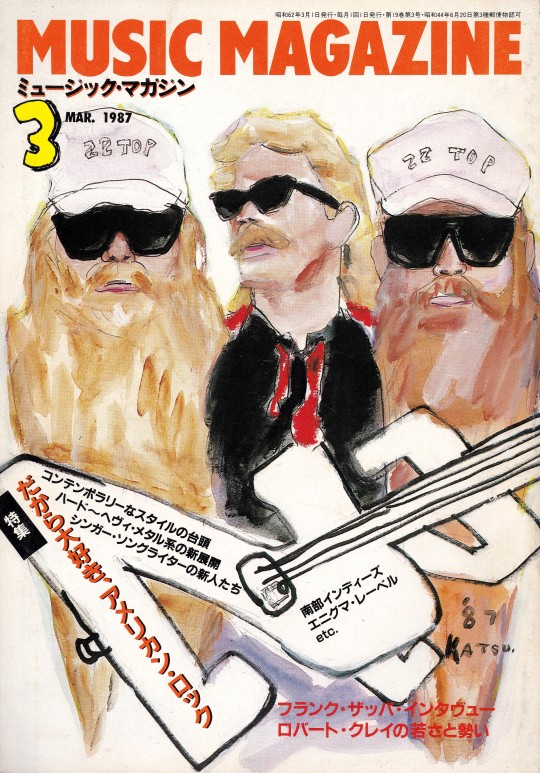
ミュージック・マガジン 1987年3月号
表紙=「ZZトップ」吉田カツ
特集「だから大好き、アメリカン・ロック」
#ミュージック・マガジン 1987年3月号#music magazine#ミュージック・マガジン#zz top#zzトップ#katsu yoshida#吉田カツ#anamon#古本屋あなもん#あなもん#book cover
98 notes
·
View notes
Photo
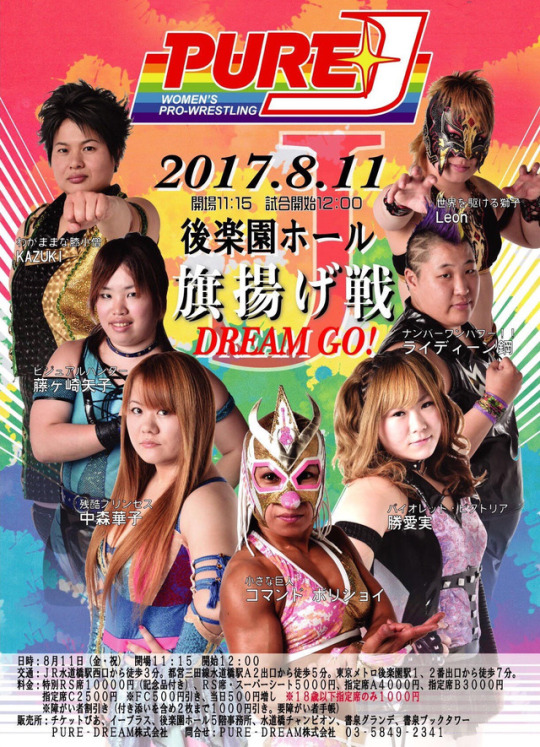
PURE-J (8/11/17) Results
Korakuen Hall (Tokyo, Japan)
Command Bolshoi defeated Konami via Bolshoi with the Stretch Plum (7:21)
Natsumi Maki & Alex Lee defeated Aoi Kizuki & Saori Anou via Maki with the Jackknife Hold on Kizuki (7:37)
Leon defeated Mariko Yoshida via Leon with the Capture Buster (8:42)
Ladder Match: KAZUKI defeated MIKAMI via KAZUKI with the Deep Kiss (7:31)
Takako Inoue defeated Yako Fujigasaki via Inoue with the Destiny Hammer (5:48)
Hiroyo Matsumoto defeated Rydeen Hagane via Matsumoto with the Rock Drop (9:53)
Yumiko Hotta defeated Manami Katsu via Hotta with the Pyramid Driver (10:41)
Meiko Satomura defeated Hanako Nakamori via Satomura with the Death Valley Bomb (10:48)
website | twitter | tumblr | instagram
#Alex Lee#Aoi Kizuki#Command Bolshoi#Hanako Nakamori#Hiroyo Matsumoto#Joshi#KAZUKI#Konami#Leon#Manami Katsu#Mariko Yoshida#Meiko Satomura#MIKAMI#Natsumi Maki#PURE-J#Rydeen Hagane#Saori Anou#Takako Inoue#Yako Fujigasaki#Yumiko Hotta#PURE J#Results
1 note
·
View note
Text
PURE-J Results for August 11, 2017
PURE-J Results for August 11, 2017
PURE-J “DREAM GO!” 8/11/17 [Fri] 12:00 @ Korakuen Hall in Tokyo (1) Command Bolshoi vs Konami ♦Winner: Bolshoi (7:21) with a Stretch Plum ~Following the match, Konami made an appeal to be entered in the tournament to crown PURE-J’s first champion. (2) Aki Kizuki & Saori Anou vs Natsumi Maki & Alex Lee ♦Winner: Maki (7:37) with a Jackknife Hold on Kizuki (3) Leon vs Mariko Yoshida ♦Winner: Leon…
View On WordPress
#alex lee#aoi kizuki#command bolshoi#hanako nakamori#hiroyo matsumoto#joshi puroresu#kazuki#konami#Korakuen Hall#leon#manami katsu#mariko yoshida#meiko satomura#mikami#natsumi maki#pure-j#rydeen hagane#Saori Anou#takako inoue#yako fujigasaki#yumiko hotta
1 note
·
View note
Text
The Beginning & The End
read it on the AO3 at https://ift.tt/2ZWbJV4
by SoVeryAverageMe
Akiyama and Yoshida find themselves scorekeeping for a middle school volleyball tournament. Years and years later the two of them are in the same position with some surprisingly familiar faces.
Words: 1069, Chapters: 1/1, Language: English
Series: Part 1 of muses (a hq!! rewatch project)
Fandoms: Haikyuu!!
Rating: General Audiences
Warnings: No Archive Warnings Apply
Categories: Gen
Characters: akiyama katsu, yoshida maikeru
Relationships: Akiyama Katsu & Yoshida Maikeru, (aka those two scorekeepers in episode 1)
Additional Tags: Mentioned Hinata Shouyou, Mentioned Kageyama Tobio, (Light) Manga Spoilers, POV Outsider, S01E01: The End & The Beginning
read it on the AO3 at https://ift.tt/2ZWbJV4
1 note
·
View note
Note
I know this may sound a bit obscure, but reading PMK chapter 51 had something that caught my attention: when Katsu Kaishuu told Tetsunosuke there are "two big secrets" about him that if he knew them he would be in shock for days. However, because Tetsu rejected his offer those secrets still remain unsaid but now I'm intrigued what Katsu meant with that. It's related to Tetsu's heritage but now I'm a bit afraid it'll be revealed that he was adopted or something like that, thoughts about it?
Hmm, good question, I have no idea what the truth behind that might be. I don’t see being adopted as something too big as long as his parents loved him dearly (which they did), and I think back then, a lot of people adopted children, usually so they’d have an heir to the family name. That’s what happened to Kondou.
I guess it has to have something to do with the very meaning of the title “Peacemaker” to this series? Imo, his dad has always been a mysterious figure. Sakamoto Ryoma respected him greatly , and Sakamoto also tried to woo the Ichimura brothers away from the Shinsengumi, apparently because he thought that joining the Shinsengumi wasn’t befitting of the Peacemaker’s sons. I suspect Tatsu knows more but he’d never spill the truth, he just wants an easy life and to protect his brother.
There’s also still this big mystery as to who killed their father. Tetsu always thought it was Yoshida Toshimaro, but when he confronted him, Yoshida had no idea what Tetsu was talking about. It could just be that Yoshida didn’t remember that because he had burned down so many houses, but I don’t think that’s the case. Tetsu’s father seems like he was a fairly important person, so I imagine Yoshida would remember killing him. Taking all of that into consideration, I still think it might be possible that the Shinsengumi was behind it, and that it was Hijikata whom Tetsu saw kill his father. It was mentioned that Hijikata and Yoshida resembled each other, and I don’t remember the details right bow but I feel like in the beginning, there were comments from Kondou and others on taking Tetsu in that suggested that Hijikata felt somehow responsible for him? Not sure anymore, I should reread the beginning someday.
That’s just an idea that I have. I don’t know. But I think we’ll find out eventually, and it’s gonna be something big.
8 notes
·
View notes
